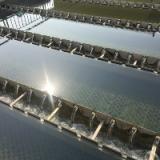Heavy Metals Removal
Remove heavy metals from industrial and municipal wastewater to meet effluent guidelines and maintain environmental compliance
Industries that utilize heavy metals in their processes are more concerned than ever about toxic heavy metals in their wastewater treatment processes and sludge and the impact these heavy metals have on both the environment and their bottom line. Veolia offers patented, break-through technologies that solve the problem of heavy metals in the areas of wastewater and sludge management while meeting effluent guidelines, maintaining environmental compliance and cost-effectively improving operational efficiency.
Product Highlight
Features & Benefits
Case Studies

Program for heavy metals precipitation and foam control saves United Airlines $381,000
When California’s limits on heavy metals were lowered to protect San Francisco Bay, this major airline was required to upgrade its pretreatment level to meet the new wastewater standards.

Electroplater meets heavy metals discharge limits using MetClear technology

Nickel removal treatment of wastewater system brings effluent levels into compliance

MetClear MR2405 improves mercury removal in IAF system

MetClear MR series product keeps battery plant within strict regulatory limits and increases water reuse

Reducing parts washer effluent zinc levels meets discharge limits & saves US$9,000
At this US plant making aerial work platforms, changes in the size and quantity of parts going through the zinc phosphate washer had reduced the contamination between baths, as well as the overflow
